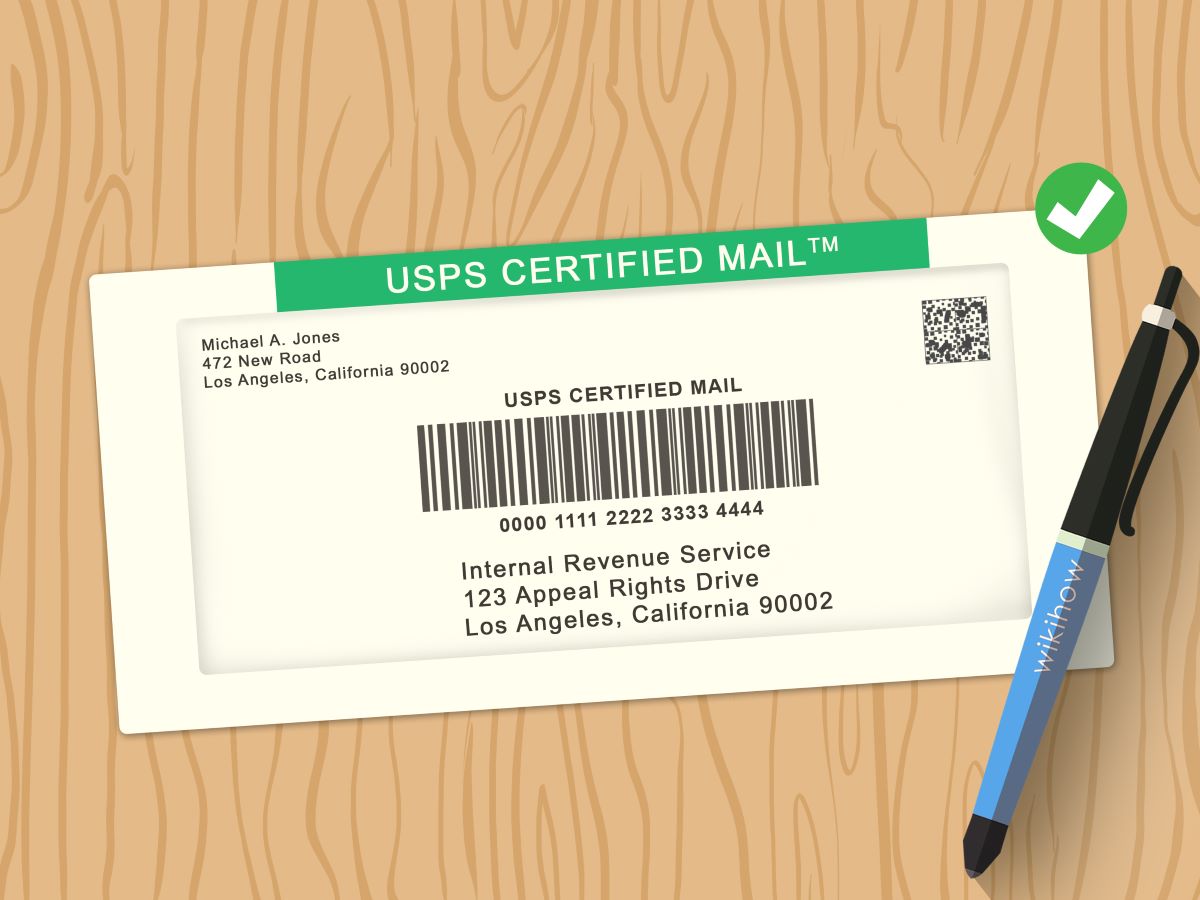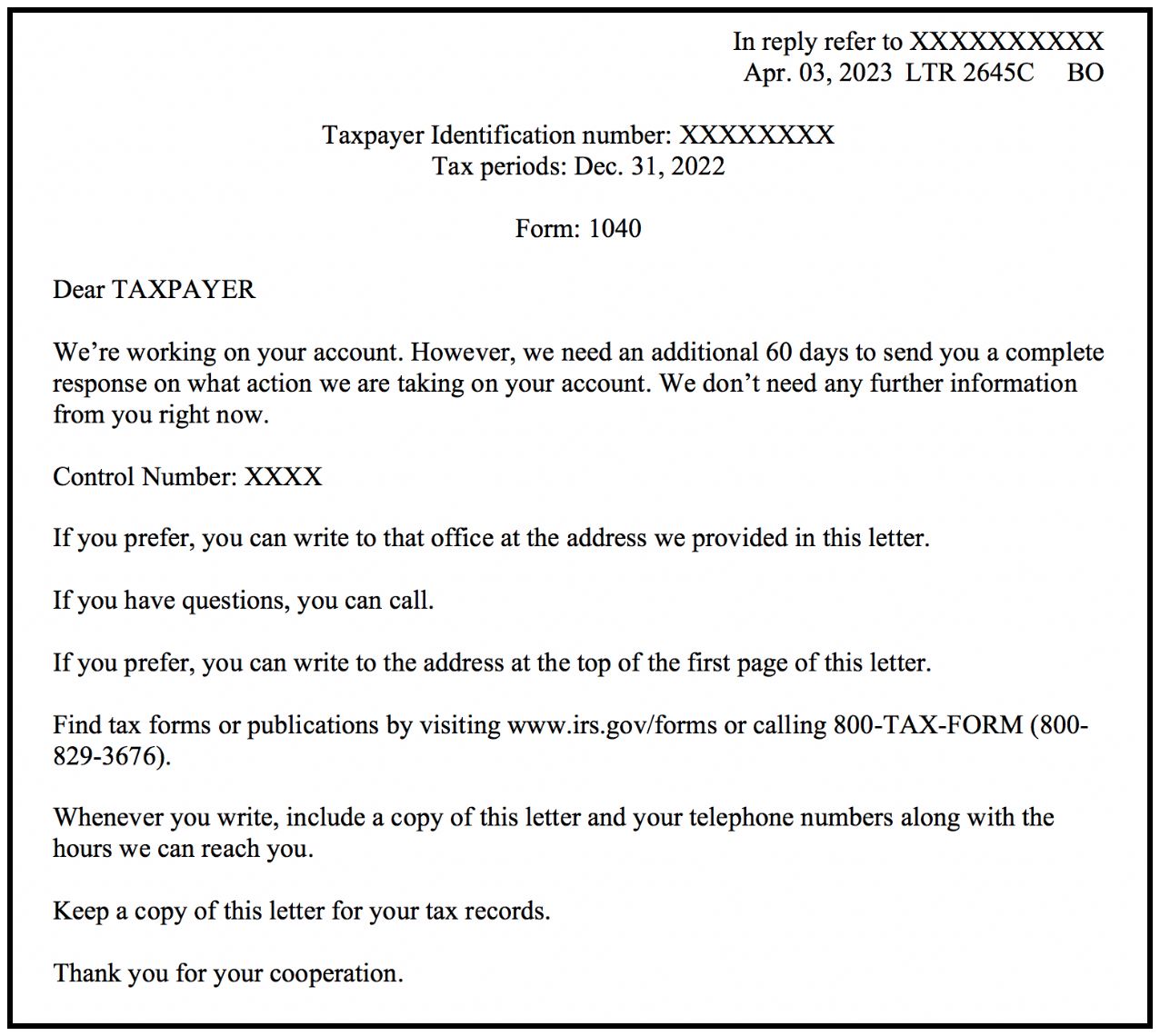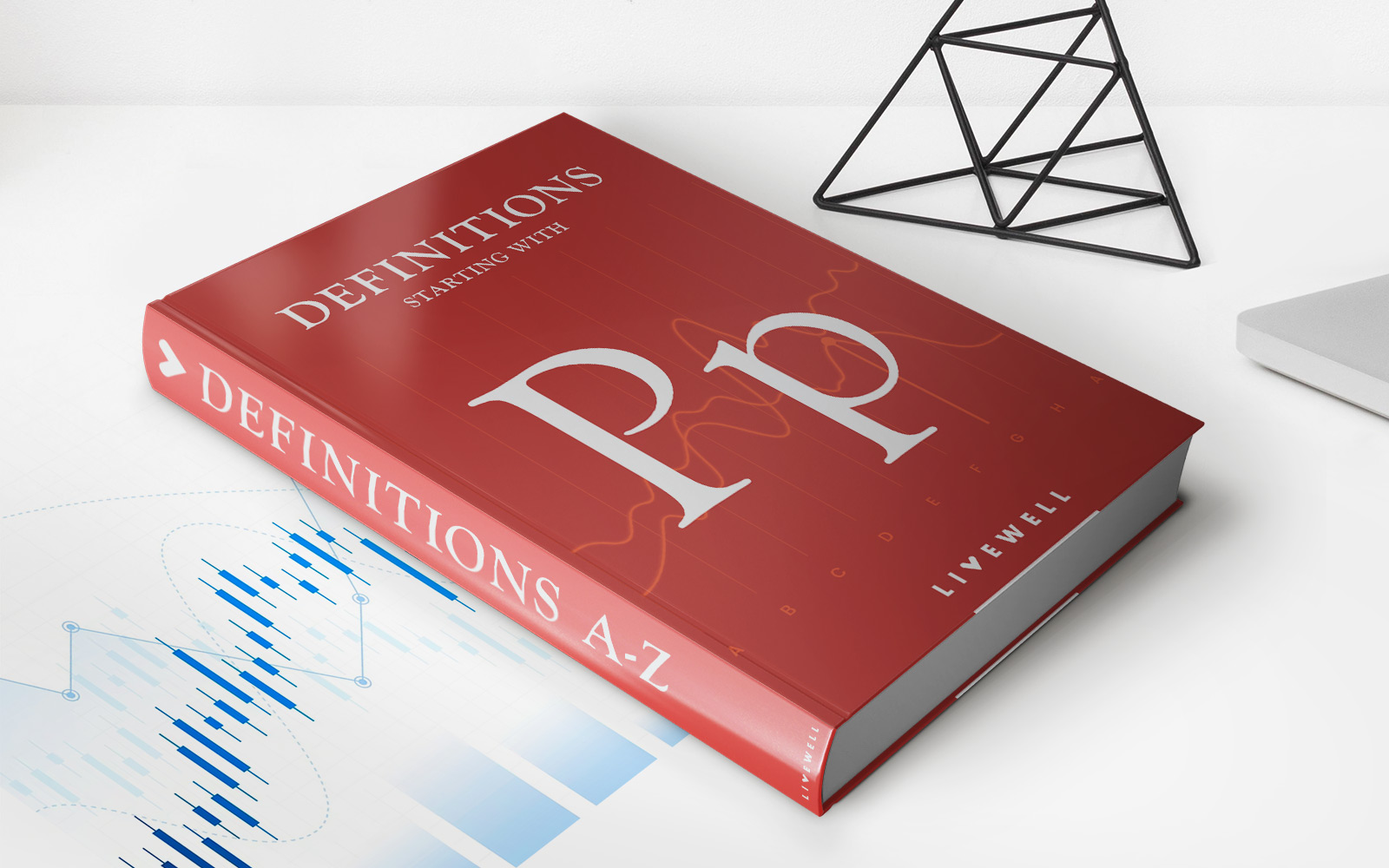Home>Finance>How To Write A Cancellation Letter For Insurance


Finance
How To Write A Cancellation Letter For Insurance
Modified: February 21, 2024
Learn how to write a concise and effective cancellation letter for insurance with our step-by-step guide. Ensure a smooth finance transition and avoid any complications.
(Many of the links in this article redirect to a specific reviewed product. Your purchase of these products through affiliate links helps to generate commission for LiveWell, at no extra cost. Learn more)
Table of Contents
Introduction
Writing a cancellation letter for insurance may seem like a daunting task, but it is a necessary step when you want to terminate your coverage. Whether you are canceling your auto insurance, health insurance, or any other type of insurance policy, it is important to do so in a clear and formal manner. This not only ensures that your cancellation request is properly documented, but it also helps you maintain a good relationship with your insurance provider.
In this article, we will guide you through the process of writing a cancellation letter for insurance. We will provide you with step-by-step instructions on what information to include, how to format the letter, and tips for expressing your request effectively. By following these guidelines, you can ensure that your cancellation is processed smoothly and without any complications.
It is important to note that insurance policies can vary in terms of their cancellation requirements. Therefore, it is always a good idea to review your policy documents or contact your insurance provider to understand the specific instructions for canceling your coverage. However, the general guidelines outlined in this article will give you a solid foundation to write a comprehensive and effective cancellation letter.
Whether you have found a better insurance option, no longer need coverage, or have any other reason for canceling your insurance policy, this article will provide you with the necessary guidance to compose a professional and courteous cancellation letter. So let’s dive in and learn how to write a cancellation letter for insurance.
Step 1: Gather the Necessary Information
Before you start writing your cancellation letter for insurance, it is important to gather all the necessary information to ensure accuracy and completeness. Here are the key details you should have on hand:
- Policy Information: Locate your insurance policy documents and gather information such as the policy number, start date, and end date. These details will help the insurance provider identify your policy and process your cancellation request accurately.
- Contact Information: Ensure you have the correct contact information for your insurance provider. This includes their name, department or customer service contact, phone number, and mailing address. Having this information readily available will help you address the cancellation letter properly and ensure it reaches the correct recipient.
- Personal Details: Your cancellation letter should include your full name, address, and contact information. This information helps the insurance provider identify you as the policyholder and contact you if any additional information is required.
- Reason for Cancellation: Identify the reason for canceling your insurance policy. Whether it’s due to obtaining coverage elsewhere, a change in circumstances, or dissatisfaction with the current policy, clearly understanding your reasons will help you articulate them in the cancellation letter.
- Effective Date of Cancellation: Determine the desired date when you want your insurance policy to be canceled. This date may be immediate or in the future, depending on your specific circumstances. Remember to consider any notice period required by your insurance policy to ensure a smooth transition.
By gathering all the necessary information, you set yourself up for a well-prepared cancellation letter that accurately communicates your request to the insurance provider. It also demonstrates that you have taken the time to carefully consider your decision, which can help facilitate a smoother cancellation process.
Step 2: Format the Letter
Formatting your cancellation letter for insurance is important to ensure that it looks professional and is easy to read. Here are some key elements to keep in mind when formatting your letter:
- Date: Begin your letter with the date of writing. This is important for record-keeping purposes and establishes a timeline for your cancellation request.
- Recipient’s Information: Next, include the name, title, department, and address of the insurance provider. This information should be placed on the left-hand side, followed by a line break.
- Your Information: Below the recipient’s information, include your own name, address, and contact information. Make sure to align this information on the right-hand side of the page.
- Salutation: Start your letter with a formal salutation, such as “Dear [Recipient’s Name],” or “To Whom It May Concern.” If you know the specific person to address the letter to, it is best to use their name for a more personalized touch.
- Body of the Letter: In the body of the letter, clearly state your intention to cancel your insurance policy. Provide the necessary policy details, including the policy number, start date, and end date. Explain the reason for cancellation concisely and avoid going into unnecessary details.
- Closing: End your letter with a polite and professional closing. Common closings include “Sincerely,” “Best regards,” or “Yours faithfully.” Leave space for your handwritten signature after printing the letter.
- Attachments: If you are attaching any supporting documents, such as a copy of your new policy or any required forms, make a note of it at the end of the letter. You can mention the attachments by writing “Enclosures” or “Attachments” followed by a list of the documents.
Remember to use a professional tone throughout the letter and keep it concise and focused. Avoid using jargon or technical terms unless necessary. The overall appearance and structure of the letter should be clean and organized, making it easy for the recipient to understand and process your cancellation request.
Step 3: Include Important Details
When writing a cancellation letter for insurance, it is crucial to include all the important details to ensure a smooth and accurate processing of your request. Here are some key details to include:
- Policy Information: Clearly state the policy number, the type of insurance policy you are canceling (e.g., auto, health, home), and the name of the insurance company providing the coverage. This information helps the recipient identify your specific policy and process your cancellation accordingly.
- Effective Date of Cancellation: Clearly state the desired date when you want the cancellation to take effect. This can be the current date, a specific future date, or the end of the policy term. Be sure to check your policy terms for any notice period requirements, as you may need to provide advance notice before the cancellation takes effect.
- Reason for Cancellation: Briefly explain the reason for canceling your insurance policy. Whether it’s due to finding better coverage elsewhere, a change in your circumstances, or any other reason, it is important to provide a clear and concise explanation. Avoid rambling or including unnecessary details.
- Contact Information: Include your full name, address, phone number, and email address. This information allows the insurance provider to contact you if they need any additional information or have any questions regarding your cancellation request.
- Request for Confirmation: Request a written confirmation of the cancellation once it is processed. This can provide peace of mind and serve as proof that your cancellation request has been successfully completed. Include a line in your letter stating, “Please provide a written confirmation of this cancellation for my records.”
- Payment Information (if applicable): If you have any outstanding premium payments or refunds due, mention this in your letter. Provide details about any payments already made or request a refund for any remaining premium that should be returned to you.
By including all the important details in your cancellation letter, you ensure that the insurance provider has all the necessary information to process your request accurately. This will help avoid any confusion or delays in the cancellation process, ultimately leading to a smooth and hassle-free termination of your insurance policy.
Step 4: Clearly State the Cancellation Request
When writing a cancellation letter for insurance, it is crucial to clearly and explicitly state your request to cancel the policy. Here are some tips to help you articulate your cancellation request effectively:
- Be Direct: Begin this section of your letter by stating your request to cancel the insurance policy clearly and unambiguously. For example, you can write, “I am writing to formally request the cancellation of my insurance policy with [Insurance Company].” This direct approach ensures that your intention is understood from the outset.
- Include Policy Information: Restate the policy number and type of insurance policy you are canceling to avoid any confusion. This reinforces the specific policy you are referring to and helps the insurance provider locate your account in their records.
- Specify Effective Cancellation Date: Clearly state the date from which you want the cancellation to take effect. This can be the current date, a specific future date, or the end of the policy term. Make sure to review your policy terms to determine if any notice period is required.
- Mention Reason (optional): While it is not necessary to provide a detailed explanation of your reason for canceling, you can briefly mention it if you wish. For example, you can write, “Due to a change in my circumstances, I no longer require the coverage provided by this policy.” Keep the explanation concise and professional.
- Request Acknowledgment: Politely request acknowledgement of your cancellation request. This can be in the form of a written confirmation sent to your address or via email. Mentioning this in your letter ensures that you have a record of the insurance provider’s acknowledgment of your request.
By explicitly and clearly stating your cancellation request in the letter, you minimize any possible confusion or misunderstanding. This helps the insurance provider process your request efficiently and ensures a smooth termination of your insurance policy.
Step 5: Provide Supporting Documents (if applicable)
In some cases, you may be required to provide supporting documents along with your cancellation letter for insurance. These documents can vary depending on the type of insurance policy you are canceling and the specific requirements of your insurance provider. Here are some common examples of supporting documents you may need to include:
- New Insurance Policy: If you are canceling your current insurance policy because you have obtained coverage elsewhere, it may be beneficial to include a copy of your new insurance policy as proof of replacement. This can help the insurance provider understand your decision and expedite the cancellation process.
- Proof of Cancellation with Another Provider: If your reason for canceling is because you have already obtained insurance coverage with another company, include any documentation that confirms the cancellation of your previous policy. This can include cancellation letters or statements from the previous insurance provider.
- Required Forms: Some insurance providers may require you to fill out specific forms to initiate the cancellation process. These forms are typically provided by the insurance company or can be downloaded from their website. Make sure to fill out the forms accurately and include them with your cancellation letter.
- Payment Information: If there are any outstanding premium payments or refunds due, provide the necessary payment information or instructions in your cancellation letter. This can include details of any payments you have made and any remaining premium that should be refunded to you.
When including supporting documents, ensure that you make copies and retain the originals for your records. If you are sending the cancellation letter by mail, it is recommended to send it via certified mail with a return receipt requested. This provides proof that your letter and supporting documents were delivered to the insurance provider.
Remember to mention the attachments or enclosures in your cancellation letter so that the recipient is aware of the additional documents included. This ensures that all the necessary information is considered and can help expedite the cancellation process.
Step 6: Express Gratitude and Request Confirmation
As you conclude your cancellation letter for insurance, it’s important to express gratitude for the coverage provided and request confirmation of your cancellation. Here’s how you can effectively accomplish this:
- Express Gratitude: Begin the closing section of your letter by expressing your appreciation for the insurance coverage you received. A simple statement such as, “I would like to express my gratitude for the coverage provided by your insurance company over the policy term,” acknowledges the services provided by the insurer and maintains a positive tone.
- Request Confirmation: Politely request written confirmation of the cancellation. This confirmation acts as proof that your cancellation request has been received and processed. You can add a line such as, “I kindly request that you provide a written confirmation of this cancellation for my records.” This ensures you have documented evidence of the cancellation.
- Contact Information: As a last step, reiterate your contact information in case the insurance provider needs to reach you regarding the cancellation request. Double-check that the information you provide is accurate and up-to-date, including your name, address, phone number, and email address. This makes it easy for the insurance provider to contact you if required.
Remember to maintain a respectful and professional tone throughout the letter, and to sign the letter by hand if you are sending a printed copy. Alternatively, if you are sending the letter via email, you can use a scanned copy of your signature or a digital signature.
By expressing gratitude and requesting confirmation, you not only end the cancellation letter on a positive note, but you also ensure that you have the necessary documentation to confirm the cancellation of your insurance policy.
Conclusion
Canceling an insurance policy may seem like a daunting task, but by following the steps outlined in this article, you can write a clear and effective cancellation letter. Remember to gather all the necessary information, format the letter professionally, and include important details such as policy information, effective date of cancellation, and contact information. Clearly state your cancellation request and provide any supporting documents if required. Express gratitude for the coverage provided and request confirmation of the cancellation. By incorporating these steps, you will ensure that your cancellation request is properly documented and processed by the insurance provider.
It is important to note that different insurance policies may have specific cancellation requirements. We recommend reviewing your policy documents or contacting your insurance provider to ensure that you follow the correct procedures. While this article provides general guidelines, it is always best to adhere to the instructions provided by your insurance provider.
Writing a cancellation letter for insurance is an important step in terminating your policy. By approaching this process in a professional and courteous manner, you can maintain a good relationship with your insurance provider and ensure a smooth transition. Whether you are canceling auto insurance, health insurance, or any other type of insurance policy, following the steps outlined in this article will help you navigate the process with ease.
Remember, the cancellation letter serves as a formal record of your request, so it’s essential to keep a copy for your own records. Additionally, it’s wise to maintain open communication with your insurance provider throughout the process to resolve any potential issues or concerns.
By following these guidelines and utilizing the tips provided, you can confidently prepare and write a cancellation letter for insurance that effectively communicates your request and facilitates a successful cancellation of your policy.














